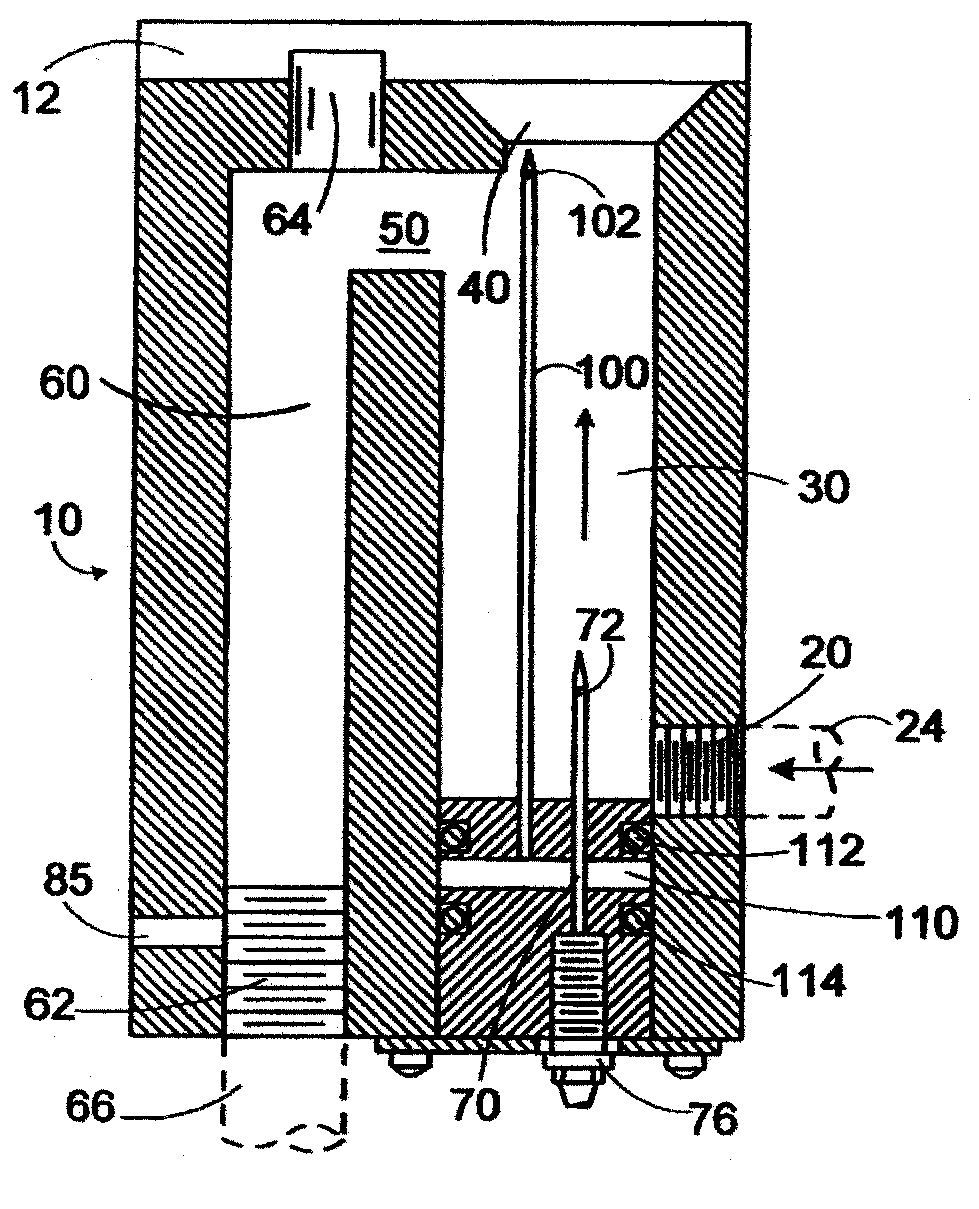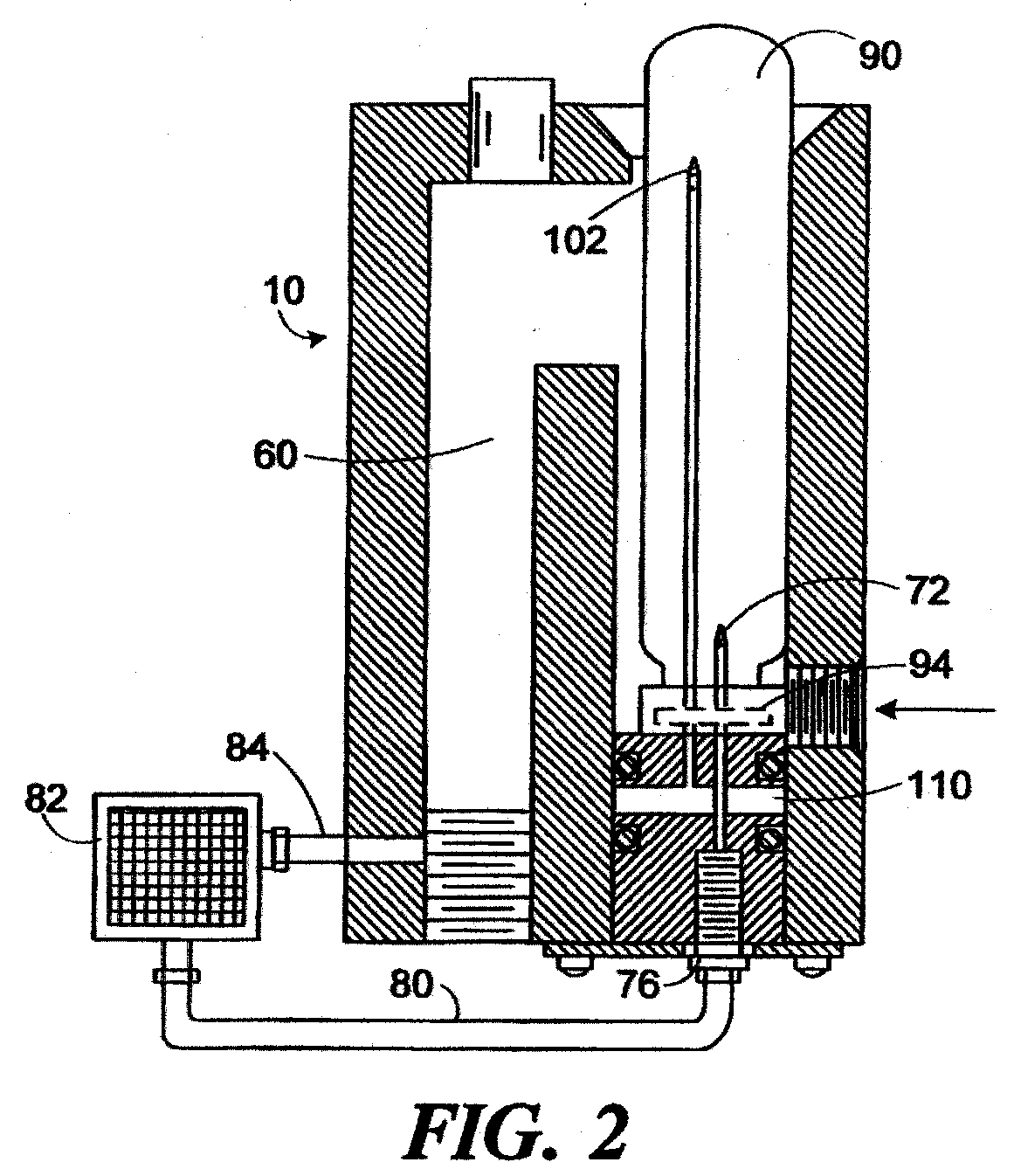Device to alternately supply a fluid to an analyzer
- Summary
- Abstract
- Description
- Claims
- Application Information
AI Technical Summary
Benefits of technology
Problems solved by technology
Method used
Image
Examples
Embodiment Construction
Cross Reference to Related Applications
[0001] This application is a continuation of U.S. application Serial No. 09 / 894,313, filed June 27, 2001, now pending, which in turn was a continuation of U.S. application Serial No. 09 / 368,990, filed August 5, 1999, which became U.S. Patent No. 6,271,043 issued August 7, 2001, which in turn was a division of U.S. application Serial No. 09 / 191,610, filed November 13, 1998, which became U.S. Patent No. 5,976,468, issued November 2, 1999, which in turn was a continuation of U.S. application Serial No. 08 / 629,609, filed April 9, 1996, which became U.S. Patent No. 5,837,203, issued November 17, 1998.
Background of Invention
[0002] The present invention relates to the field of chemical analysis, and more particularly to a method and a device that supplies a portion of fluid from a stream to a chemical analyzer and, when desired, supplies fluid of known chemical composition to the analyzer.
[0003] Fluid analysis is used in a wide variety of research, ma...
PUM
 Login to View More
Login to View More Abstract
Description
Claims
Application Information
 Login to View More
Login to View More - R&D
- Intellectual Property
- Life Sciences
- Materials
- Tech Scout
- Unparalleled Data Quality
- Higher Quality Content
- 60% Fewer Hallucinations
Browse by: Latest US Patents, China's latest patents, Technical Efficacy Thesaurus, Application Domain, Technology Topic, Popular Technical Reports.
© 2025 PatSnap. All rights reserved.Legal|Privacy policy|Modern Slavery Act Transparency Statement|Sitemap|About US| Contact US: help@patsnap.com



